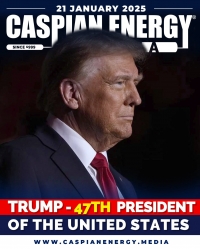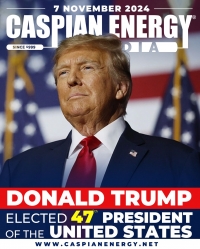Today, Brent crude oil price stayed within the $60–61 range, falling by about 2.53 percent from the previous closing price, reaching $61.230. Meanwhile, the price of a barrel of West Texas Intermediate (WTI) crude oil declined to $57.98 (-2.28%).
Earlier this week, the price of a barrel of Brent crude oil fell by approximately 3.87 percent compared to today’s closing price, reaching $63.20. At the same time, the price of a barrel of West Texas Intermediate (WTI) crude oil stood at $59.67.
Oil prices dropped sharply on the first trading day of the week after U.S. President Donald Trump resumed his tariff policy and the OPEC+ group announced plans to increase production in May.
The Brent crude oil price fell by 3.87 percent to $63.20, the lowest level in the past four years.
The world’s largest oil importer, China, decided to take retaliatory measures against Trump’s new tariffs, while other major economies, such as the European Union, announced they would take similar steps, bringing the issue of new decisions back to the agenda.
Oil and gas prices continue to be an indicator of economic growth in the world’s leading economies, as renewable sources in the EU, for example, reduced generation by 40% this winter, leading to an increase in demand for natural gas. Therefore, the introduction of trade barriers further increases the importance of hydrocarbons for both commodity markets and the future of trade.
Trump stated that the tariffs he imposed should be considered as a "medicine" and that he does not plan to back down. Trump announced that the new tariffs, which are expected to take effect on April 9, will impose additional taxes of up to 54 percent on products imported from China. He emphasized that these tariffs are aimed at eliminating the U.S. trade deficit with other major economies and will remain in place until this goal is achieved.
China responded by announcing a 34 percent tariff on all U.S. goods, criticizing Trump's tariffs and threatening further actions.
Additionally, on April 3, OPEC+ announced that it would gradually halt its voluntary production cuts of 2.2 million barrels per day starting April 1 and increase production by 411,000 barrels per day in May.
After years of artificially stimulating demand for oil, such an increase in production led to an imbalance in the prevailing trend of high oil demand. The tariffs, aimed at boosting the competitiveness of the leading global economy, added further risks. The effectiveness of these measures in the U.S. economy will become clear in the coming months, depending on the response of all key market players. The success will hinge on how well they can stimulate production in the new market conditions and turn the situation to their benefit.
The outcome will also determine whether the "bulls" will regain control of the oil market or if the "bears" will prevail. The key to stabilizing economic growth in this situation will be the diversification of energy sources, which will provide the variety needed to satisfy domestic and regional industrial markets, ultimately leading to a natural equilibrium in trade relations.






